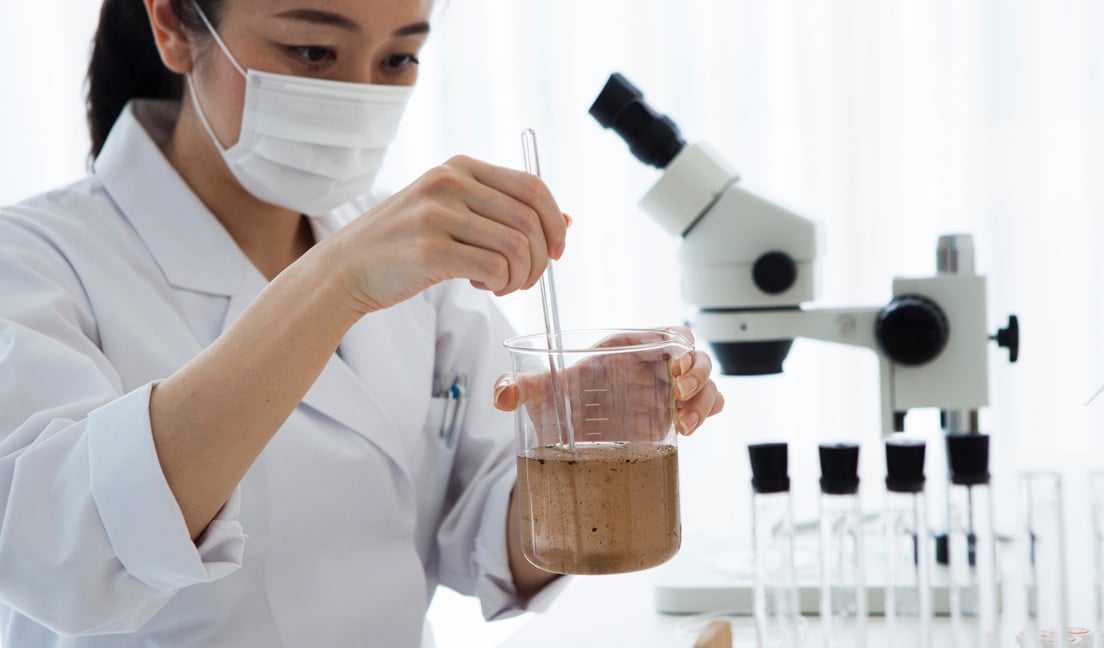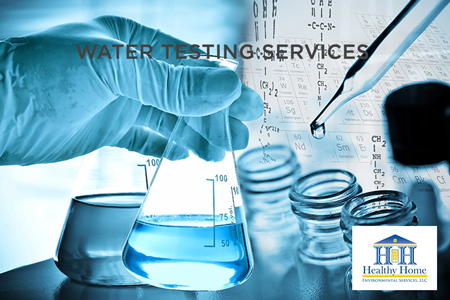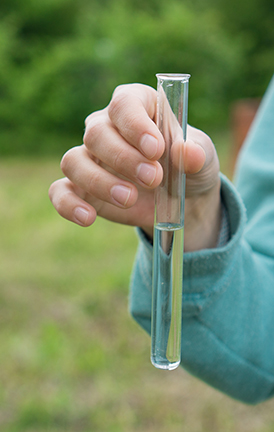Discover Reliable Well Water Testing Services for Your Comfort
Discover Reliable Well Water Testing Services for Your Comfort
Blog Article
Discover What Is Included in Water Evaluating and How It Ensures Safe Drinking Water
Recognizing the ins and outs of water screening is crucial in guaranteeing the top quality and safety of our drinking water. With a careful evaluation of physical, chemical, and microbiological aspects, water testing recognizes possible impurities that can position wellness risks. From the presence of hefty metals to damaging bacteria, each test element plays a crucial role in keeping the stability of our water system. Advanced strategies like chromatography and spectrometry improve the accuracy of these analyses. Just how do these processes equate right into the regulative frameworks that ensure safety and security in our daily intake?
Secret Components of Water Testing
Water screening is a vital process that entails a number of essential parts to ensure the safety and quality of alcohol consumption water. Additionally, ensuring the pH equilibrium of water is essential, as it influences the water's corrosiveness and the efficacy of sanitation procedures.
Another significant component entails microbiological evaluation, where water samples are checked out for the visibility of bacteria such as germs, viruses, and protozoa. If taken in, this evaluation is vital to recognize biological hazards that can posture health threats. Additionally, chemical evaluations are conducted to spot organic and inorganic substances, such as hefty metals, nitrates, and chemicals, that may be existing in the water supply.

Finding Harmful Contaminants
Discovering dangerous contaminants in drinking water is an essential facet of safeguarding public health. Each type of contaminant presents unique health and wellness risks, making their discovery critical to guarantee the water eaten by the public is risk-free.
Water testing for impurities is typically performed by regulative agencies and water energies, using a combination of field tasting and research laboratory evaluation. These evaluations are designed to identify both normally occurring materials and anthropogenic contaminants that might have entered the water with farming overflow, commercial discharge, or aging infrastructure. Regular monitoring is important, as contamination levels can vary due to ecological changes, seasonal variants, or human activities.
The recognition of unsafe contaminants notifies essential activities, such as water treatment interventions or public advisories, to mitigate dangers. Early discovery is important to protect against adverse wellness effects, ranging from gastrointestinal illnesses to long-lasting conditions like cancer cells, therefore ensuring the continued safety and security of alcohol consumption water.

Chemical Evaluation Strategies
In the realm of making certain secure drinking water, chemical evaluation techniques play an essential role in recognizing and evaluating pollutants. These approaches are necessary for finding a vast selection of chemical substances, consisting of heavy metals, chemicals, and commercial pollutants, which can posture considerable health and wellness dangers.
Gas chromatography-mass spectrometry (GC-MS) is an additional critical technique, particularly for organic substances. It separates complicated combinations and determines unstable and semi-volatile organic substances, guaranteeing that contaminants like benzene and toluene are within risk-free limitations. High-performance liquid chromatography (HPLC) is likewise used for non-volatile compounds, including specific pesticides and drugs.
Ion chromatography is utilized to establish concentrations of cations and anions, such as nitrates and sulfates, which are pivotal in assessing water high quality. These chemical analysis techniques collectively make certain that drinking water stays safe by identifying deviations from developed pureness standards, thereby protecting public wellness. Making sure precision and accuracy in these tests is extremely important to maintaining the stability of water safety and security analyses.
Microbiological Evaluating Techniques
Exact microbiological testing is crucial for protecting public health and wellness by making sure that alcohol consumption water is devoid of damaging pathogens. This process involves spotting and enumerating bacteria such as microorganisms, viruses, and protozoa that may infect water products. Common microorganisms include Escherichia coli, Giardia, and Cryptosporidium, each posturing significant health risks.
A number of methods are utilized in microbiological testing to recognize these risks. The membrane purification method is frequently made use of, involving water going through a filter that records germs, which are after that cultured to identify their existence and concentration. Additionally, the multiple-tube fermentation method enables the quantification of coliform bacteria using a series of dilution and incubation actions.
Innovations in modern technology have actually presented molecular techniques such as polymerase domino effect (PCR), which enables for the fast and very specific detection of pathogens by magnifying their hereditary product. Enzyme-linked immunosorbent assays (ELISA) additionally use a method to identify microorganisms by identifying particular proteins or antigens.
These differed approaches are vital for comprehensive water high quality assessment, guaranteeing that water treatment procedures are efficient which circulation systems preserve safety. By employing these microbiological screening methods, prospective health and wellness risks can be recognized and minimized quickly.

Importance for Public Health
Making sure the microbiological safety of alcohol consumption water directly affects public health by avoiding the spread of waterborne conditions. Microorganisms such as germs, viruses, and protozoa can result in diseases like cholera, dysentery, and intestinal infections (Water Tesing Services Orlando). The implementation of thorough water testing methods is paramount in identifying and minimizing these risks, thus safeguarding communities from potential outbreaks
Routine water screening not only spots microbial impurities yet likewise evaluates chemical and physical parameters that can influence wellness. For instance, extreme levels of nitrates or hefty steels such as lead can position serious health and wellness threats, particularly to vulnerable populaces like babies and expecting females. By identifying these threats early, water testing makes it possible for timely interventions, making certain the water supply stays within secure intake standards.
Additionally, water testing plays a vital duty in preserving public confidence in municipal water supply. It offers transparency and responsibility, assuring the public that their health and wellness is a top priority. For plan makers and wellness authorities, the information derived from water screening educates choices on framework financial investments and public wellness techniques, making sure resources are routed where they are most needed. This way, water testing is essential in promoting a much healthier, safer society.
Verdict
Water testing functions as a necessary system for making sure the security and top quality of alcohol consumption water through thorough analysis of its physical, chemical, and microbiological buildings. By detecting unsafe impurities, such as hefty metals and pesticides, and utilizing sophisticated strategies like chromatography and spectrometry, water testing assists in the recognition of possible wellness dangers. The implementation of rigorous testing methods is essential for preserving conformity with safety criteria, eventually guarding public health and wellness and strengthening confidence in local water supply.

By recognizing these threats early, water testing allows timely interventions, guaranteeing the water supply continues to be within safe intake criteria.
Water testing serves as an important system for making certain the security and high quality of drinking water Water Testing Service via comprehensive examination of its physical, chemical, and microbiological buildings.
Report this page